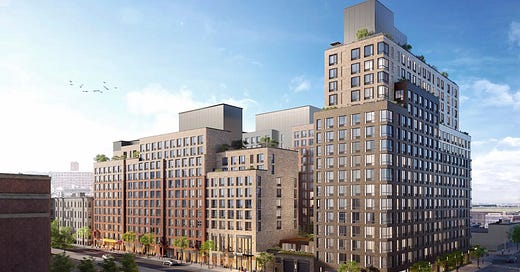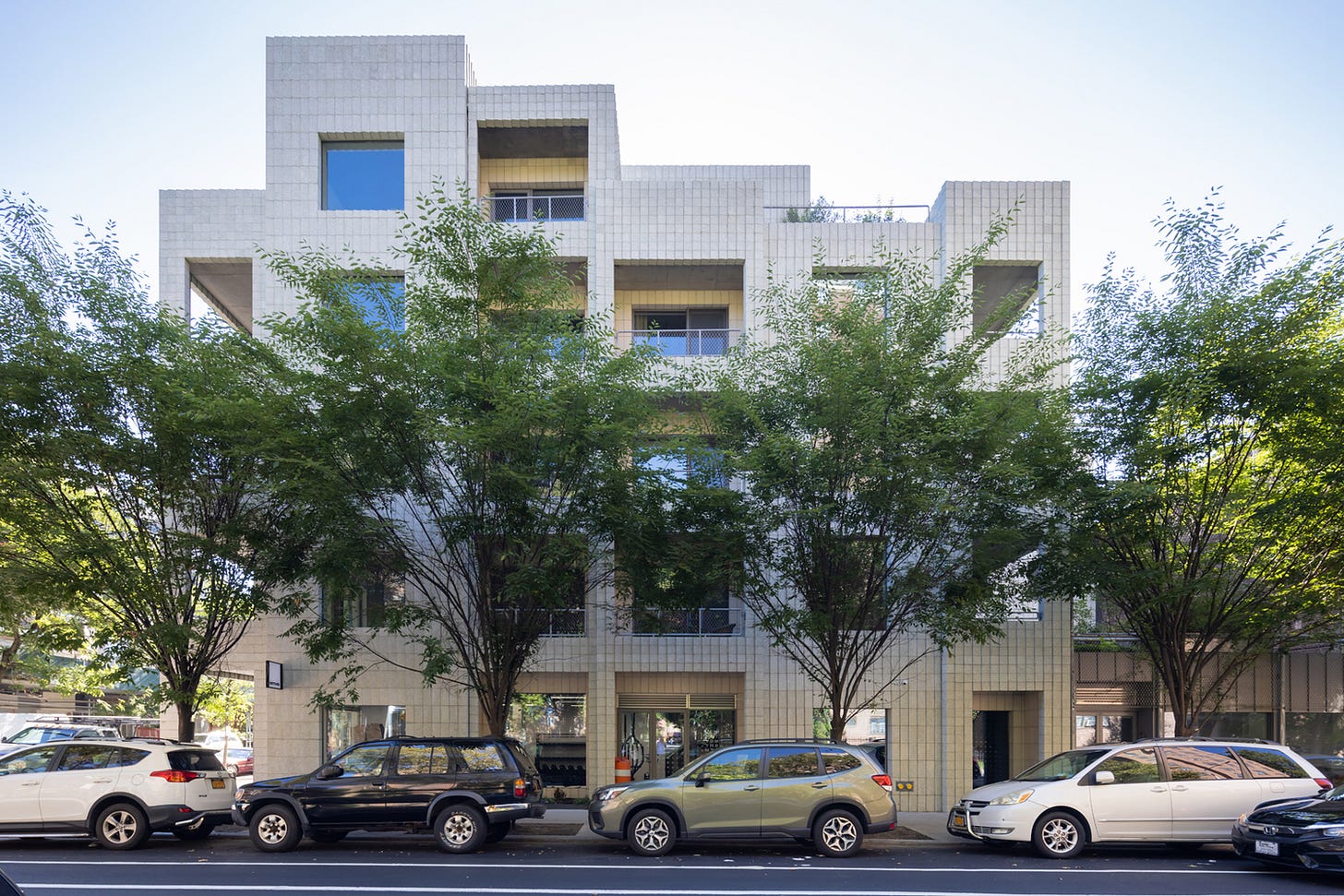The bureaucratic vision of housing, as illuminated in the New York Times faux-architecture criticism column (or whatever it is called nowadays: housing?) is the longtime socialist bloc typology where spreadsheet values overrule humanist design considerations: space, site, light, health, use, quality. Over and over again, whether in a column about redeveloping West Village housing blocks or new Los Angeles social housing, we get the same Soviet-style banal and cheap construction that destroys community and cities.
In the case of the West Village column, we see yet another project where you get a lot of high-cost proposals, billions in DC money thrown around, and the same mediocre design results we are now seeing manifest all over New York City, in areas like Inwood where cheap McUrbanist housing rises.
The Inwood housing development is the private developer version of McUrbanism. It now features quality earthy materials on the facade — brick, stone, color, shifting volumes — but still lacks the best of design features seen in prewar New York buildings. These buildings include exterior and interior courtyards, monumental lobbies, well-lit interior hallways (not double-loaded dark corridors) and more human-scale detailing instead of the blocky shifting volumes that plague most public and private multifamily development.
While the New York Times will never learn from its design negligence, a glimpse into a better future is seen in the new 450 Warren from SO-IL Architects, a modern housing development in Brooklyn with some of these features: courtyard, light, better materials and details. Instead of throwaway commercial space at the bottom floor, there is interesting, bright space that gives the building character and value.
This brings to mind the current political dichotomy separating the American discourse. On one hand, you have the interests of DC and state bureaucracy (and their media cronies at the New York Times) that only sees dollar values, housing blocs and agencies as the solutions to problems. Then they are constantly disappointed when the same tired 1950s-70s housing project designs fail. Then they use terms like “not architecturally fancy” to put lipstick on a pig, as Michael Kimmelman does in every column.
On the other side are those that want to cut the government out of housing completely and leave housing to its own devices. Neither side is really acknowledging the power of design to both find better precedents in the past as well as connect ideas for the future. A true Design Authority and better design culture isn’t the kind of engineering mindset that both the Soviet Media and Elon Musk of the world prefer. This isn’t about big or small government, but smarter government.
This doesn’t even begin to address even larger issues of urbanism that fed issues of housing shortages, unhealthy conditions and economic decline. But design is the method to connecting the small detail scale to the city scale. Without it, you will keep getting $1.5 billion development projects that are even worse than what they are replacing, such in the West Village, Los Angeles, Hudson Yards, Sunnyside Yards and everywhere else.
Time for a real Design Authority at all levels of government and media. Whether in DC, New York or elsewhere.






